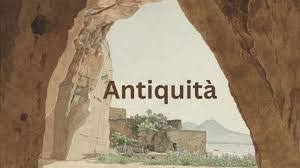Antiquità represents a rich tapestry of ancient artifacts, structures, and cultural innovations that continue to influence modern society profoundly. Spanning from the dawn of civilization to the decline of the Roman Empire, these remnants offer invaluable insights into the foundations of human progress and cultural evolution.
What Is Antiquità?
Antiquità encompasses artifacts, objects, and architectural marvels from ancient civilizations predominantly in the Mediterranean region. It includes relics from ancient Greece, Rome, Egypt, and the Near East, ranging from pottery and sculptures to monumental buildings and intricate mosaics.
The Dawn of Antiquità
Anthropologists trace the origins of Antiquity to the emergence of early cities and empires in Mesopotamia, Egypt, the Indus Valley, and China. These civilizations laid the groundwork for written language, technological advancements, and complex societal structures, shaping the course of human history and the development of archaeology and cultural sciences.
FAQs
What is Antiquità?
This period is recognized as the beginning stage as well as the most important stage in the chronology of humanity. Here we find the early civilizations such as the Mesopotamians, Egyptians, Greeks, and Romans and witness great progress in art, science, governance, and philosophy.
What civilizations had made their mark by this era?
The Antiquità period is divided into 4 significant civilizations that are in the Near East Mesopotamian Civilization, Ancient Egypt, and Greek and Roman. These cultures were the main driving forces behind the development of the modern world society from which we are benefiting. One can mention legal, literary and political systems as just a few examples.
What was the importance of ancient Greeks in the current formation of modern Western philosophy?
Greek culture has been the wellspring of the Western philosophy, arts and science. Indeed, Socrates, Plato and Aristotle investigated in their writings, ethics, metaphysics and politics. His conception of democracy, based primarily on direct democracy of Athens, laid the foundation for the political structures that underpin today’s governments.
What’s the Architectural renovations from Antika?
Roman architects discovered the ability of using arches, the creation of special types of concrete and the building of various varieties of arches. Although the sophisticated town-planning of the Indus Valley Civilization cannot be compared with the outstanding pyramids of Egypt, both structures are a peculiar symbol of the Ancient eras. Greek architects created classic columns (Doric, Ionic, Corinthian). These inventions showcased both advancement in engineering and artistic skills as well as trickled down to enhance longevity and modernity.
Why is studying Antiquità important in the modern world?
The ability to study Antiquità in detail becomes even more important, because this is the starting point of the development of our modern society. It assists in understanding why and how politics, legal codes, aspects of culture and engineering progress lie in the past. Moreover ,being connected to Innovation and adaptation through Antiquità ,we acquire hands -on experience that remains valid up to now .
How did the Romans influence today’s infrastructure?
Romans are the reason for most of the prevailing infrastructure today and their roads and aqueducts are the chief point behind the expansions and maintenance of their empire. Their engineered skill let them maintain the military logistics and sanitation reciprocity of their time and serve as a starting point for the systems of transportation and water supply that we use nowadays.

